Have you ever stood at the meat counter, confused by the array of steak cuts available?
You’re not alone.
Many home cooks find it tricky to choose the right cut and cook it properly for the best flavor and texture.
Luckily, with a little know-how, you can become a steak expert quickly.
In this guide, we’ll discuss the most popular steak cuts, from tender filet mignon to juicy ribeye, and share simple tips for preparing them to perfection.
Whether you prefer grilling, pan-searing, or oven-roasting, you’ll learn how to maximize each cut and impress your family and friends with your steak mastery.
Let’s dive in and explore the wonderful world of steak together!
Understanding Steak Cuts
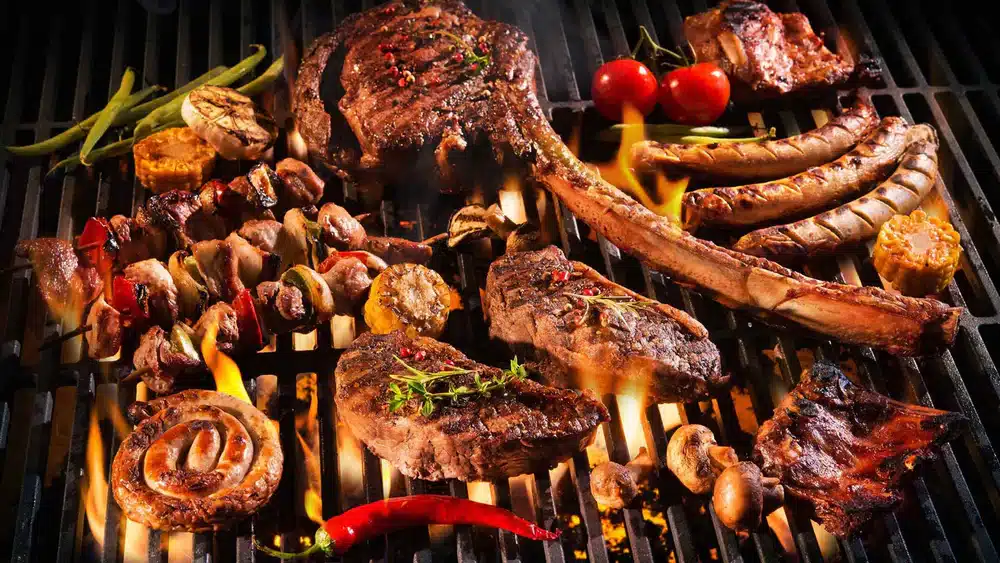
Before we dive into specific steak cuts, it’s essential to understand the concept of primal cuts and their significance in selecting the perfect steak.
Primal cuts refer to the large sections of a cow from which individual steaks are cut.
These sections are divided based on the animal’s anatomy and the muscles’ characteristics.
The primal cut determines each steak’s flavor, texture, and ideal cooking method.
Understanding primal cuts is crucial for home cooks looking to choose the right steak for their desired dish.
Knowing which primal cut a steak comes from can help you better predict its taste, tenderness, and preparation.
This knowledge empowers you to make informed decisions at the meat counter and ensures the best results when cooking your steak.
In the next section, we’ll discuss the main primal cuts and the popular steaks from each one.
Primal Cuts and Their Significance
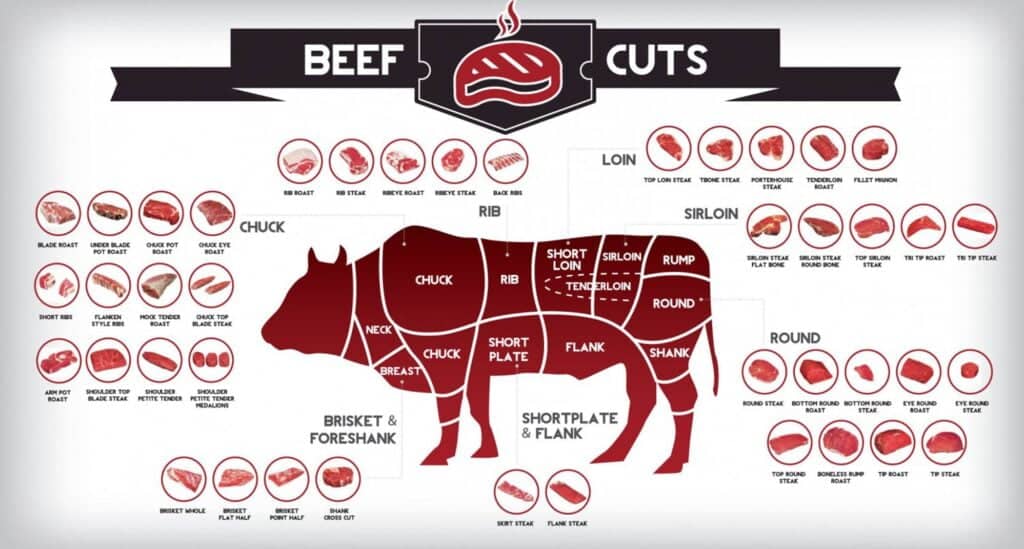
Primal Cuts Breakdown Now that we understand the importance of primal cuts, let’s take a closer look at each one and the steaks they produce.
1. Chuck
This primal cut comes from the shoulder area and contains tough, flavorful meat.
It’s often used for ground beef or slow-cooked roasts like pot roast.
2. Rib
The rib section is known for its tenderness and rich flavor.
It includes popular cuts like ribeye and prime rib, which are well-marbled and perfect for grilling or roasting.
3. Loin
The loin is the source of the most tender and expensive steaks, such as T-bone, porterhouse, and tenderloin (filet mignon).
These cuts are ideal for quick, high-heat cooking methods like grilling or pan-searing.
4. Sirloin
It is located behind the loin; the sirloin offers a balance of tenderness and flavor.
Sirloin steaks are a popular choice for grilling and are more affordable than loin cuts.
5. Round
The round comes from the cow’s hind leg and is lean and tough.
It’s best suited for roasts or ground beef, as it requires slower cooking methods to become tender.
6. Flank
This lean, flavorful cut comes from the abdominal muscles. Flank steak is a favorite for grilling and is often used in fajitas or stir-fries.
7. Plate
The plate section is located below the rib and is known for its toughness and intense flavor.
It includes cuts like skirt steak, perfect for quick, high-heat cooking.
8. Brisket
Brisket, a tough cut from the chest area, benefits from slow, low-heat cooking methods like braising or smoking.
It’s often used in barbecue or corned beef.
Understanding these primal cuts and their characteristics can help you choose the best steak for your desired cooking method and flavor profile.
High-End Steakhouse Cuts
1. Ribeye (Delmonico, Spencer, Entrecote)
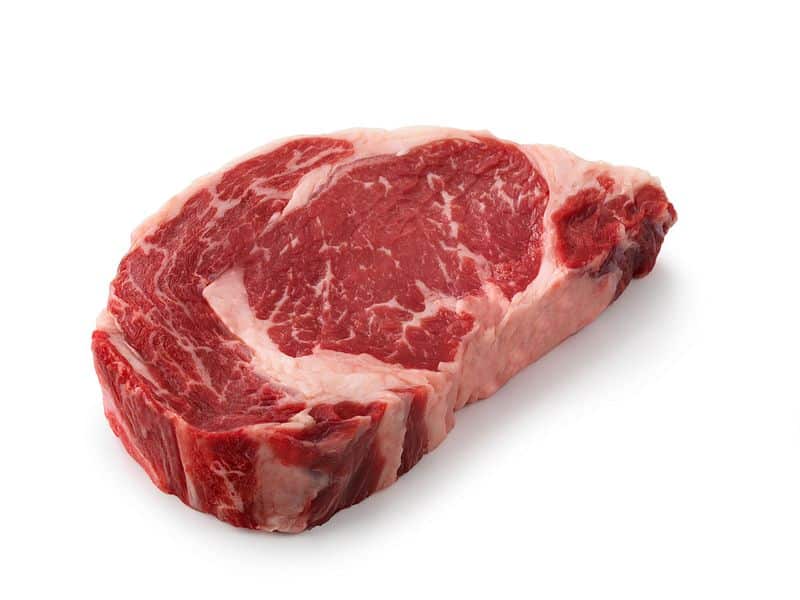
The ribeye, a favorite among steak enthusiasts, is known for its rich flavor and tender texture.
This cut comes from the rib section and is renowned for its marbling, which imparts a juicy and flavorful bite.
Slice the ribeye against the grain into 1/2-inch thick slices for optimal tenderness.
Characteristics
- Marbling: It has a high level of intramuscular fat, providing a juicy and tender texture.
- Flavor: It is rich and meaty, making it a popular choice for steak lovers.
- Tenderness: Due to the fat content, it is one of the more tender cuts.
Cooking Methods
- Grilling: Ideal for high-heat cooking, allowing the fat to render and flavor the meat.
- Skillet: Perfect for a quick sear to achieve a caramelized crust while keeping the inside juicy.
Preparation Tips
- Salting: Generously salt the ribeye and let it sit for at least an hour before cooking to enhance flavor.
- Brining: To tenderize and flavor the steak, consider putting it in a dry brine in the refrigerator for a few days.
- Marinating: Use marinades sparingly, as the ribeye’s natural flavor is rich and robust.
2. New York Strip (Top Loin, Strip Steak, Kansas City Strip)
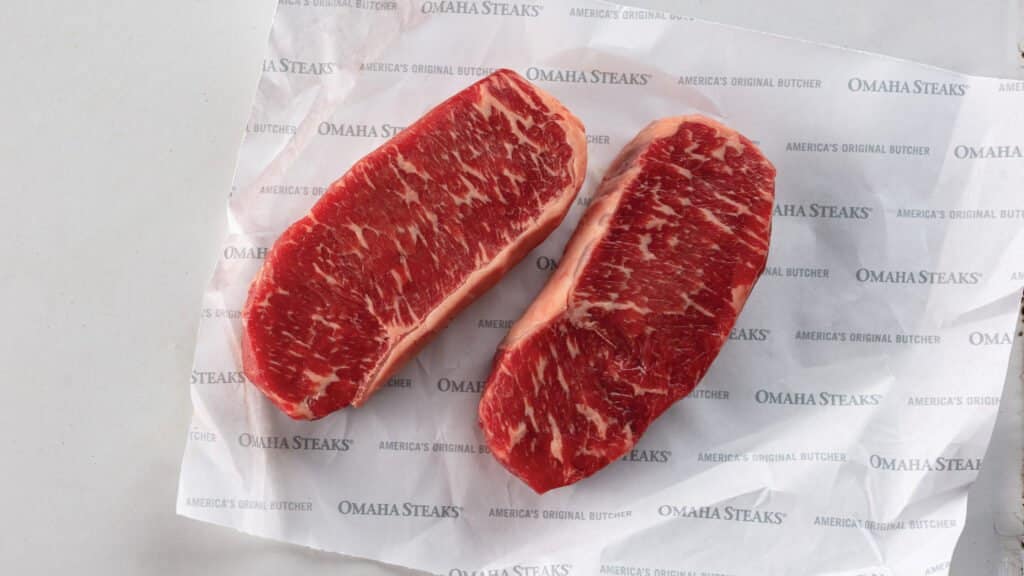
The New York Strip, another classic steakhouse favorite, is known for its balance of tenderness and flavor.
It is a versatile and reliable choice for many cooking styles.
Cut the strip steak against the grain into 1/4 to 1/2-inch thick slices for the best texture.
Characteristics
- Marbling: Moderate marbling with a distinctive strip of fat along one edge.
- Flavor: Robust and beefy, balanced between lean meat and fat.
- Tenderness: Tender but slightly firmer than a ribeye.
Cooking Methods
- Grilling: Excellent for achieving a charred exterior while keeping the interior juicy.
- Broiling: Suitable for high-heat cooking, quickly searing the outside.
Preparation Tips
- Pan-frying: Use a hot pan and minimal oil to achieve a golden-brown crust.
- Dry aging: Enhances the flavor and tenderness, which is ideal for those who prefer a richer taste.
3. Filet Mignon (Tenderloin, Chateaubriand)
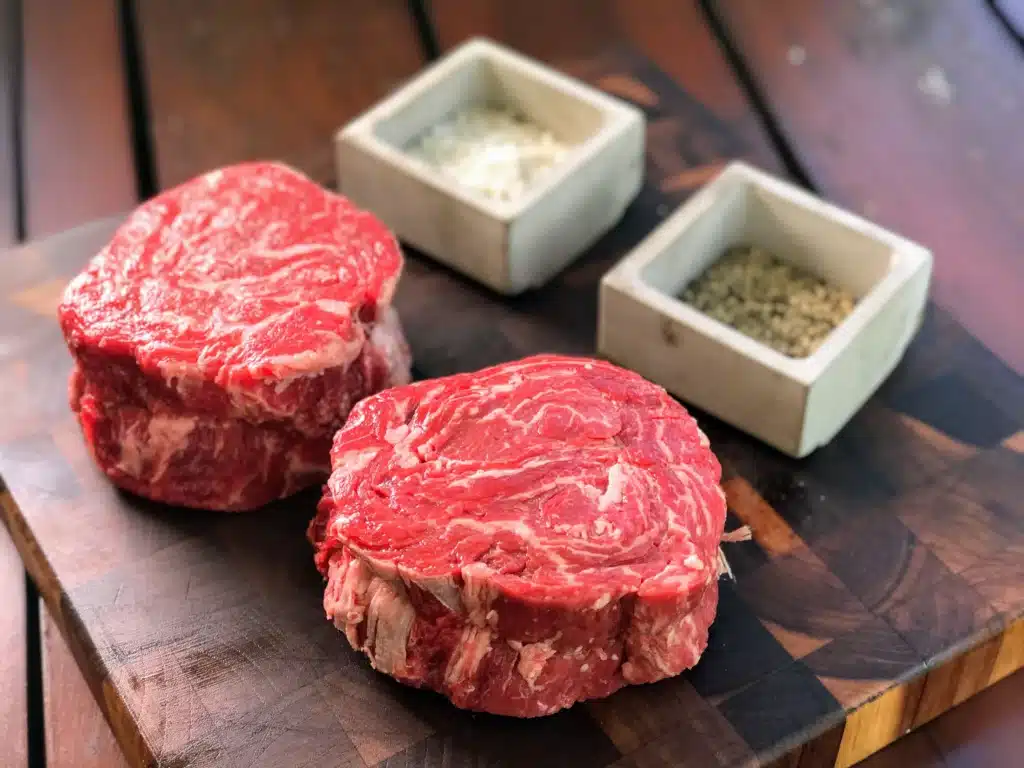
Filet Mignon, prized for its unparalleled tenderness, is a lean cut from the smaller end of the tenderloin and the epitome of luxury in the steak world.
As the most tender cut, filet mignon can be sliced into 1-inch thick portions or served whole.
Characteristics
- Leanness: Very little fat, making it a healthier option without sacrificing tenderness.
- Flavor: Mild and delicate, often enhanced with sauces.
- Tenderness: The most tender cut of steak, practically melting in your mouth.
Cooking Methods
- Stovetop-to-Oven: Start with a sear on the stove and finish in the oven for perfect doneness.
- Pan-Searing: A quick sear in a hot pan creates a flavorful crust.
Preparation Tips
Quick Sewing is essential for developing flavor without overcooking the interior.
- Wine Sauces: Pair with rich sauces like mushroom-cabernet gravy or balsamic glaze to complement its mild flavor.
4. T-Bone/Porterhouse
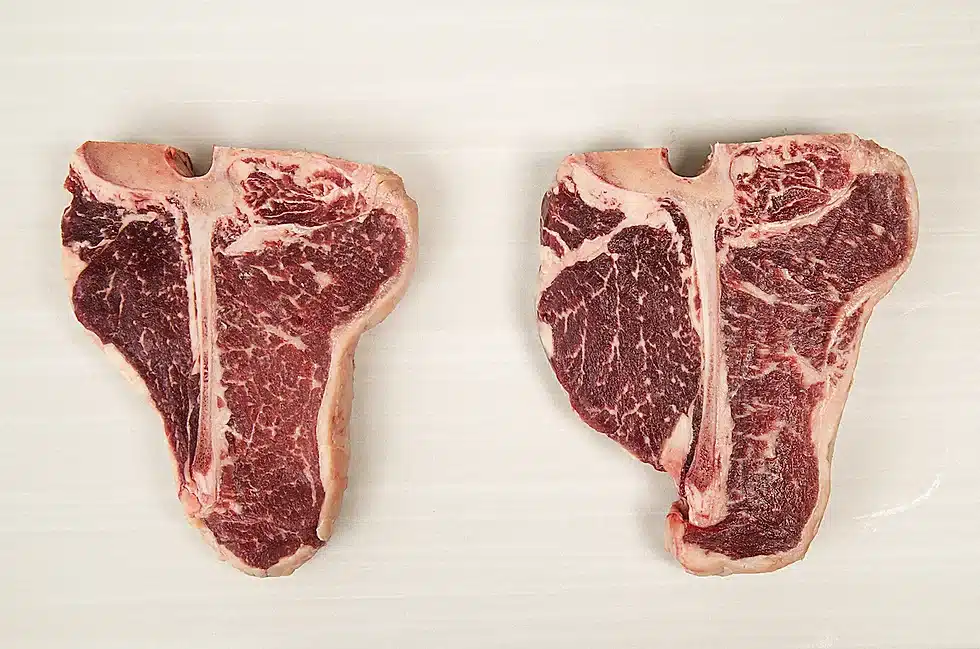
The T-Bone and Porterhouse steaks are iconic cuts that combine strip steak and tenderloin, perfect for those who want the best of both worlds.
Separate the tenderloin and strip portions, then slice each against the grain into 1/2-inch thick pieces.
Characteristics
The combination includes a strip steak and a tenderloin, separated by a T-shaped bone.
The flavor is rich and beefy, with the tenderloin providing a delicate contrast.
The bone adds additional flavor and helps retain moisture.
Cooking Methods
- Grilling: Best cooked over a grill to handle the thickness and variety of meat sections.
- Broiling: Ideal for achieving a high-heat sear, especially for thicker cuts.
Preparation Tips
- Seasoning: Use simple seasoning like salt and pepper to let the natural flavors shine.
- Grill Placement: To ensure even cooking, position the strip side directly over the flame and the tenderloin away from direct heat.
Understanding the distinct characteristics and best preparation methods for these high-end steakhouse cuts can elevate your culinary skills and impress your guests.
Each cut offers unique flavors and textures, ensuring a satisfying steak experience every time.
Cheaper Cuts with Rich Flavor
While high-end cuts often steal the spotlight, some of the most flavorful experiences come from more economical cuts.
These “cheaper” cuts, while perhaps not as tender, are packed with rich, beefy flavor.
Perfect for grilling and marinating, these steaks can be the star of your next meal without breaking the bank.
5. Hanger Steak (Butcher’s Steak)
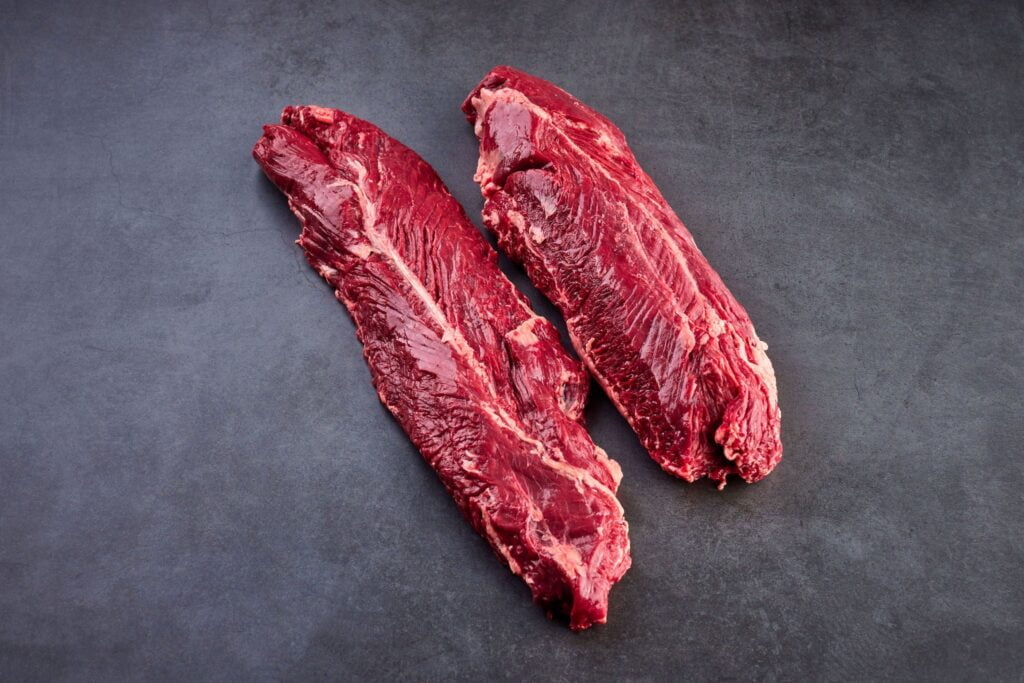
The hanger steak is a lean cut known for its rich, beefy flavor.
It’s a favorite among chefs for its versatility and robust taste
Slice the hanger steak against the grain into thin, diagonal slices for maximum tenderness.
Cooking Methods
- Grilling: It is best suited for high-heat grilling to sear the exterior while keeping the interior juicy quickly.
- Marinating: It is also excellent for marinating.
Preparation Tips
- Marinade: To enhance the flavor, use a wet rub or marinade.
- Grill: Quickly over high heat to prevent it from becoming too tough.
- Cut: Against the grain for maximum tenderness.
This cut is ideal for dishes requiring bold, beefy notes, such as steak sandwiches or salads.
6. Tri-Tip (Santa Maria Steak)

The tri-tip is a lean cut with a mild flavor, popular for its triangular shape and versatility.
Cut the tri-tip against the grain into 1/4 to 1/2-inch thick slices for optimal texture and flavor.
Characteristics
It has a mild flavor and is often used in California barbecue.
Cooking Methods
It is a versatile choice for various cooking styles and is suitable for both grilling and roasting.
Preparation Tips
- Dry rubs and Basting: They help enhance the natural flavors during cooking.
- Slice thinly Across the grain to ensure tenderness.
Due to its larger size and excellent flavor, it is great for serving at gatherings.
7. Skirt Steak (Fajita Steak)
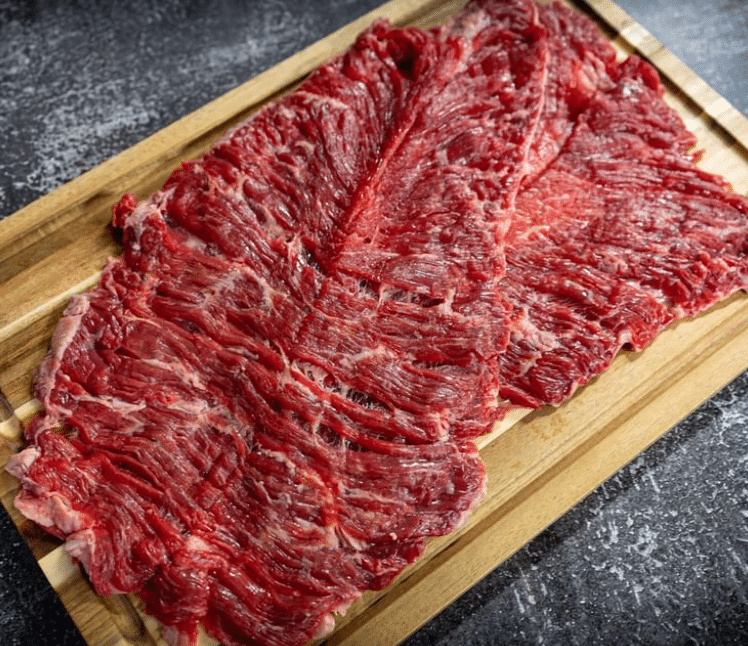
The skirt steak is a long, thin cut known for its intense flavor and versatility in quick-cooking methods.
Slice the skirt steak thinly against the grain for the best results in fajitas or stir-fries.
Characteristics
- Long and thin: With a pronounced beefy flavor.
- It is often used in fajitas and stir-fries.
Cooking Methods
- Grilling or Broiling: It cooks quickly over high heat, making it ideal.
Preparation Tips
- Marinades: Essential to tenderize and infuse additional flavor.
- Quick cooking: Helps retain juiciness.
- Slice: Against the grain to avoid toughness.
This is perfect for tacos, fajitas, and Asian-inspired dishes.
8. Flank Steak
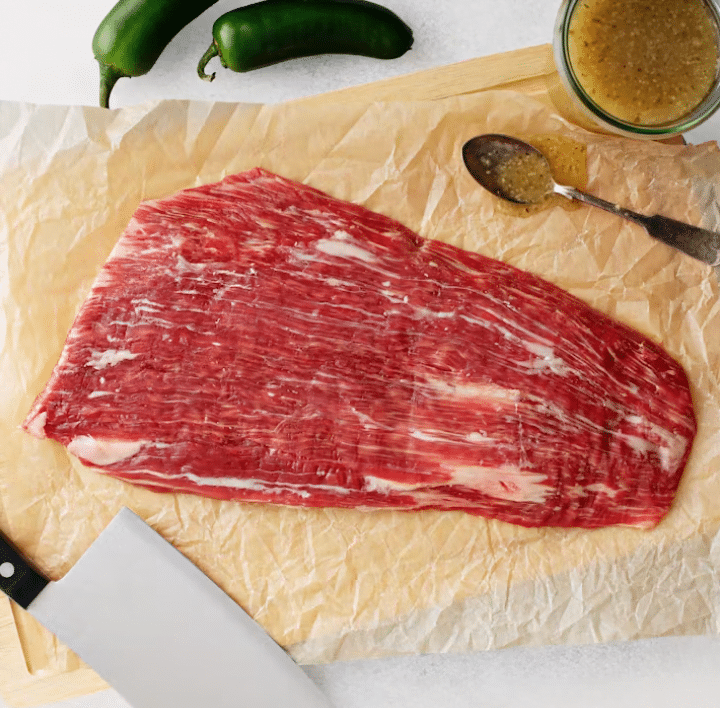
Flank steak is a long, thin cut with a tight grain, known for its robust flavor and versatility.
Cut the flank steak against the grain into thin, diagonal slices for maximum tenderness.
Characteristics
- Long and Flat: It has a tight grain structure and a hearty beef flavor.
Cooking Methods
- Best grilled or Stir-fried: Benefiting from quick, high-heat cooking.
Preparation Tips
- Marinate: To enhance tenderness and flavor.
- Slice: Against the grain for the best texture.
- Stir-fries or Steak Salads: This product is ideal for dishes requiring thin beef slices.
These economical steak cuts offer incredible flavor and versatility, making them valuable additions to your culinary repertoire.
By understanding their unique characteristics and best cooking practices, you can create delicious, restaurant-quality meals at home.
Whether grilling, marinating, or quick-cooking, these steaks prove that great flavor doesn’t have to come with a high price tag.
Specialty Cuts
Specialty cuts are premium selections known for their unique characteristics and exceptional flavor.
These cuts often come from specific parts of the cow and are prized by chefs and home cooks for their superior taste and texture.
Let’s explore some of these extraordinary cuts and learn how to prepare them for an unforgettable dining experience.
| Steak Cut | Characteristics | Ideal Cooking Methods | Preparation Tips |
|---|---|---|---|
| Tomahawk Steak | Thick-cut, rib bone intact | Grilling, oven-finishing | Resting time, presentation |
| Bone-In Strip Steak | Juicy, marbled | Grilling | Simple seasoning, rest after cooking |
| Bone-In Filet Steak | Tender, bone-in | Pan-searing, oven-finishing | Use cast-iron skillet, finish in oven |
| Ribeye Cap Steak | Tender, heavily marbled | Grilling | Marinating, high-heat searing |
9. Tomahawk Steak
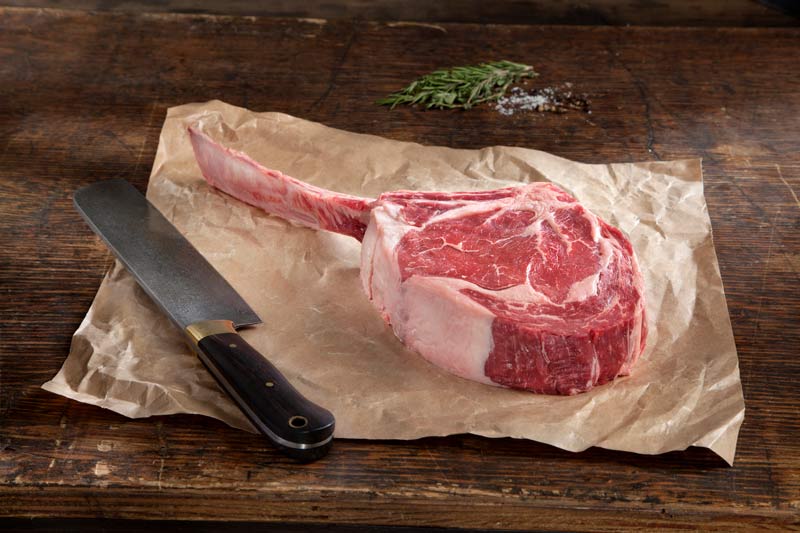
After resting, slice the tomahawk steak against the grain into 1/2-inch thick pieces.
Characteristics
- Thick-cut: With intact long rib bone, the tomahawk steak is impressively presented and offers a rich, beefy flavor.
Cooking Methods
- Grill: To achieve a beautiful sear, it can also be finished in the oven to ensure even cooking.
Preparation Tips
- Season the Steak: Generously with salt and pepper or your favorite steak rub.
- Resting: Allow it to rest before slicing to retain juices, and present it with the bone for a dramatic effect.
10. Bone-In Strip Steak (KC Strip, NY Strip)
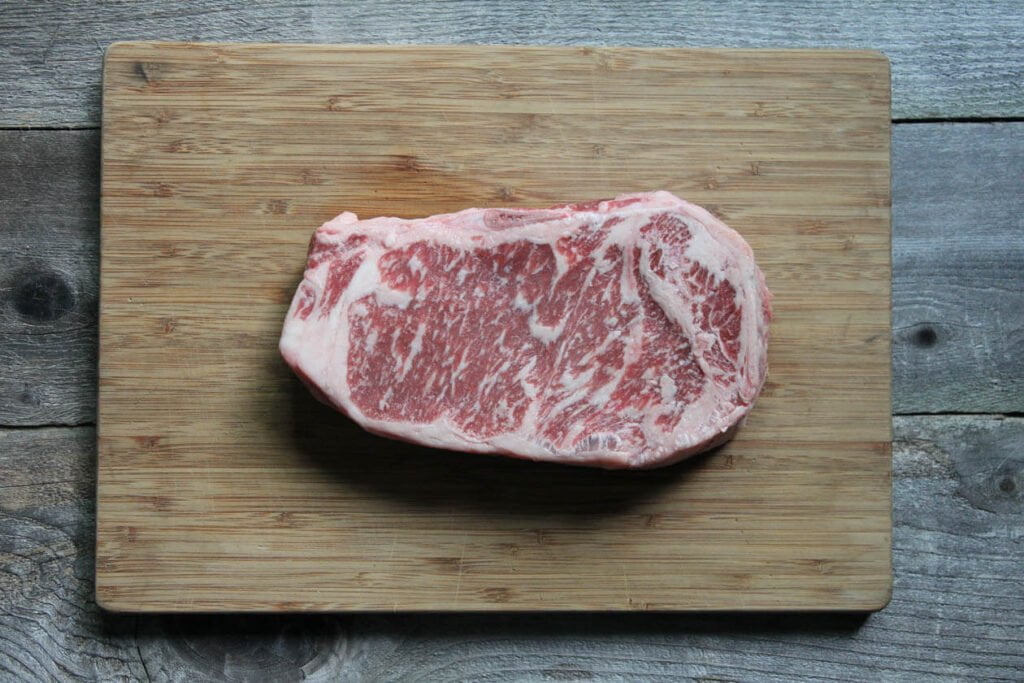
Slice the bone-in strip steak against the grain into 1/2-inch thick portions for optimal texture.
Characteristics
- Marbling: The bone-in strip steak benefits from the added depth of flavor the bone provides.
Cooking Methods
- Grilling: This cut is ideal for grilling, which enhances its natural flavors.
Preparation Tips
- Seasoning: Keep the seasoning simple to let the meat’s flavor shine.
- Grilling: Ensure the grill is hot before placing the steak to get a good sear, and let it rest after cooking to maintain its juiciness.
11. Bone-In Filet Steak
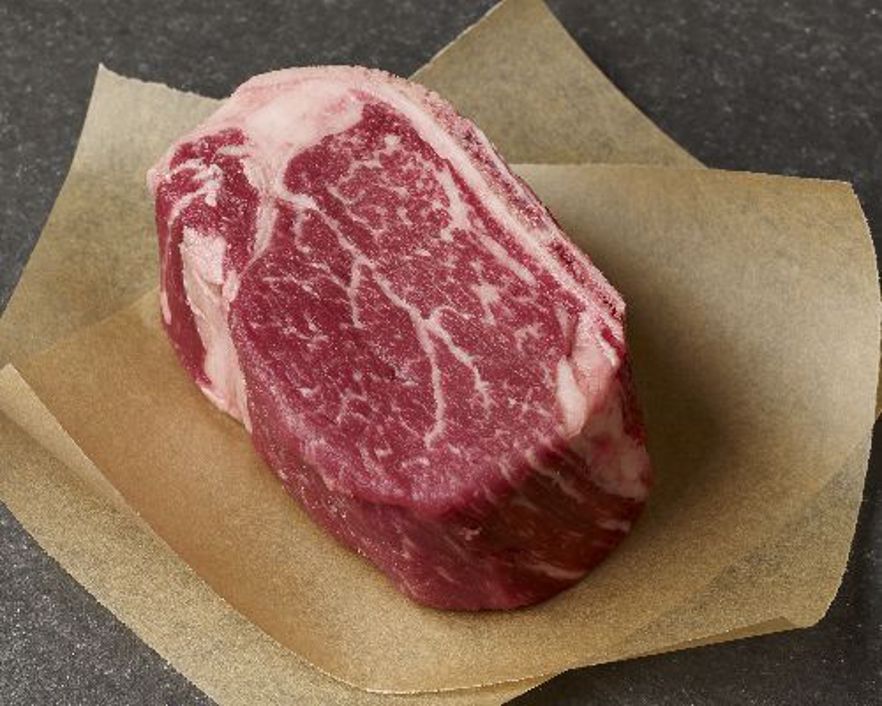
Cut the bone-in filet into 1-inch thick slices, or serve it whole for a dramatic presentation.
Characteristics
- Extremely tender: With the bone-enhancing flavor, the bone-in filet steak is known for its buttery texture and rich taste.
Cooking Methods
- Oven Finishing: This cut is perfect for pan-searing, followed by oven-finishing.
Preparation Tips
- Use a Cast-Iron Skillet: To achieve a perfect crust, and finish the steak in a preheated oven to ensure it is cooked to your desired doneness.
- Sauce: Serve with a simple sauce to complement the meat’s flavor.
12. Ribeye Cap Steak

Slice the ribeye cap against the grain into thin, 1/4-inch thick pieces for the best texture and flavor.
Characteristics
- Marbling: The ribeye cap steak offers an exceptional, rich flavor and one of the most tender cuts with heavy marbling.
Cooking Methods
- Grilling: This cut is best suited to enhance its natural taste.
Preparation Tips
- Marinate: Season the steak to make the meat’s flavor the star.
- Grill: Cook over high heat to get a good sear while keeping the inside juicy. Slice against the grain to maximize tenderness.
Specialty cuts offer a unique, elevated dining experience with distinct characteristics and ideal preparation methods.
By understanding these cuts and applying the appropriate cooking techniques, you can create restaurant-quality steaks at home that will impress your family and guests.
Don’t be afraid to try these exceptional cuts and savor the unparalleled flavors they have to offer.
Essential Preparation Tips
Resting the Meat
- Allowing your steak to rest after cooking is crucial for achieving the best texture and flavor.
- During the resting period, the juices redistribute throughout the meat, ensuring a tender and juicy result.
- Let your steak rest for 5-10 minutes before cutting and serving.
Cutting Against the Grain
- To maximize tenderness, always slice your steak against the grain.
- The grain refers to the direction of the muscle fibers in the meat.
- By cutting across these fibers, you’ll create shorter strands that are easier to chew, resulting in a more tender bite.
Trimming Fat
- While some fat is essential for flavor, too much can lead to a greasy texture.
- Trim excess fat from your steak before cooking, but leave a thin layer to keep the meat moist and flavorful.
- You can always remove more fat after cooking if desired.
Using the Right Tools
- Investing in high-quality, sharp knives and proper utensils will significantly affect your steak preparation.
- A sharp knife allows you to make clean, precise cuts, while a meat thermometer helps you achieve the perfect doneness every time.
- Using tongs instead of a fork to handle your steak will prevent unnecessary punctures that can release flavorful juices.
By following these essential preparation tips, you’ll be well on your way to creating restaurant-quality steaks at home.
Remember, the little details can make a big difference in the final result, so take the time to properly prepare and handle your steak for the best possible dining experience.
Conclusion
Understanding the various steak cuts and their ideal preparation methods is key to creating a delicious and satisfying meal.
From high-end steakhouse favorites like ribeye and filet mignon to economical cuts packed with flavor, such as hanger and flank steak, there’s a perfect cut for every taste and budget.
By mastering these cuts, you can elevate your home cooking and impress your guests with restaurant-quality steaks.
Remember to consider the unique characteristics of each cut, apply the appropriate cooking techniques, and let the natural flavors shine through simple seasoning.
With this knowledge, you’re well on your way to becoming a steak expert in your kitchen.
So fire up the grill, grab your favorite cut, and savor the mouthwatering results of your newfound expertise.
Frequently Asked Questions
What Is the Difference Between a Tomahawk Steak and a Regular Ribeye?
A tomahawk steak is a ribeye with the rib bone left intact, creating a dramatic presentation. It’s thicker and larger than a regular ribeye.
How Should I Season Specialty Steaks for The Best Flavor?
Season simply with salt and pepper or your favorite steak rub to let the meat’s natural flavor shine.
What Is the Best Way to Achieve A Perfect Sear on These Premium Cuts?
Ensure the grill or cast-iron skillet is very hot before placing the steak. This will create a beautiful, flavorful crust while keeping the inside juicy.
How Long Should I Let the Steak Rest After Cooking?
Let the steak rest for 5-10 minutes after cooking to allow the juices to redistribute throughout the meat, ensuring a tender and juicy result.
Which Cooking Method Is Best for Ensuring an Even Cook on Thick-Cut Steaks?
For thick-cut steaks, searing on the stovetop and finishing in the oven is ideal for even cooking.




